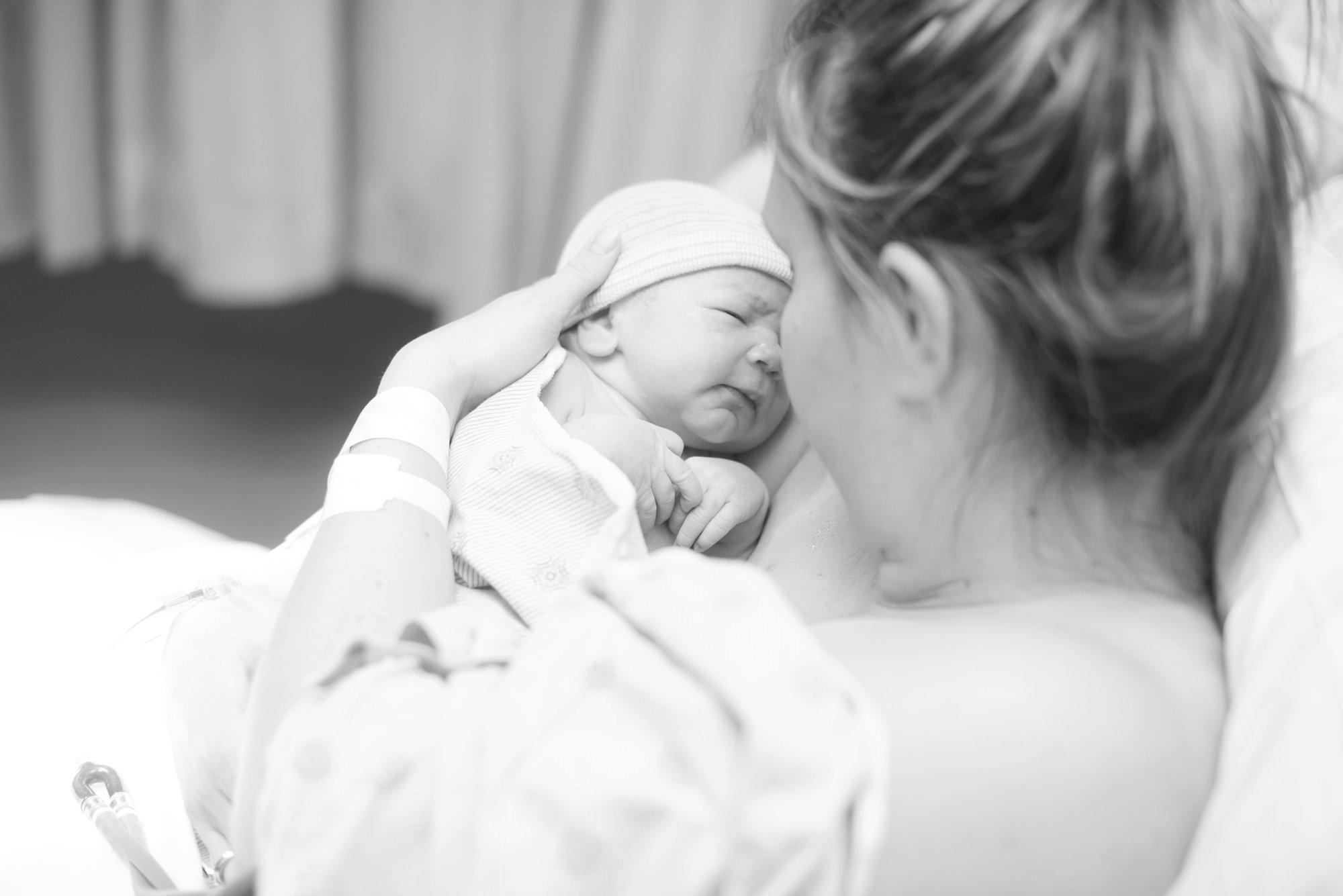
In the grand scheme of things, 1968 wasn't all that long ago, but when you really stop to think about it, an insane number of things have changed over the last five decades — especially for women. This week, a recently unearthed hospital document is underscoring that one big time, thanks to a woman named Micala Gabrielle Henson, who took to Facebook to share the list of instructions her grandmother was handed shortly after giving birth to her mom. And man, is it a doozy.
The note (which was written on a typewriter, people!) was dated October 30, 1968 and distributed by Cabbarrus Memorial Hospital in North Carolina.
In it, moms were first told that their babies would be "on display" in the nursery window during the hours of 2:30-3:30 p.m. and again from 7-7:45 p.m. And those viewing hours were strict: "Please do not ask to see baby at any other time," the instruction guide snaps.
If you're anything like me, the following thoughts likely just flooded your mind:
Uh … come again? Moms were only allowed to see their babies a total of one hour and 45 minutes a DAY? What about skin-to-skin bonding? And what if they wanted to breastfeed? And, I don't know, what about all that basic mother-child bonding time that's super important for a newborn's developmental growth?!
Ohh, but just you wait, you silly millennial … This thing is just getting started.
Additional time was allowed for breastfeeding, the list informs, but that was strictly controlled, too.
Babies would be wheeled into the mother's room 9-10 a.m., 1-2 p.m., 5:30-6:30 p.m., and 9-10 p.m. During this time, no visitors would be allowed on the maternity ward floor or in the room, especially — gasp! — fathers.
After all, you couldn't have innocent bystanders witnessing a thing as shocking as BREASTFEEDING. They'd be scarred for life! Who cares if it's a totally natural thing that's basically responsible for the survival of mankind … WE'RE TALKING ABOUT BREASTS, HERE!
Ugh. [Insert eye-roll emoji here.]
Once moms were actually breastfeeding, they could only do so for short increments of time.
This might be the most mind-boggling part of all: The first 24 hours after giving birth, moms were relegated to just five minutes of breastfeeding. For the following two days, that could be upped to a whopping seven minutes at a clip, and then 10-15 minutes on days four and five. But no more — breastfeeding for long periods, the guidelines stipulate, could cause "sore nipples."
Oh no! Anything but that!
There is also a curious list of foods, written in all caps, that moms are strongly advised to avoid while breastfeeding.
Foods like: Chocolate, candy, raw apple, cabbage, nuts, strawberries, cherries, onions, and — of all things — green coconut cake.
(Can somebody help me out here, 'cause I'm honestly curious: Was green coconut cake a thing? Kinda like Jello molds were super popular, for reasons unknown? And if so, what was so bad about them?)
In all seriousness, the instructions are humorous, but also a little sad, given what we know today about the needs of babies and mothers after birth.
According to Le Leche League International, if moms have made the decision to nurse their babies, then breastfeeding should be initiated within the first hour of birth, ideally while skin-to-skin contact is made. Subsequent feedings should be frequent too, and occur on demand. In the first 24 hours, this will work out to about eight or more times, and regulate to generally every 1 1/2-3 hours in the days and weeks that follow.
In short: trying to keep all newborns to the same strict and limited feeding schedule, regardless of their needs or their time of birth, is just plain crazy by today's standards. But so is banishing husbands and all friends and family from the maternity ward just because a baby is breastfeeding. When you consider the subtle (and not-so-subtle) shaming of it all, it's really no wonder the breastfeeding rates were so low during much of the mid-20th century.
The silver lining to all of this? At least we know better now -- in so many ways.
Look, we've come a long way since the 1960s, and it's clearly for the better. Thanks to medical advancements, tireless research studies, and way better methods of spreading information (bless you, modern Internet), we now know just how crucial those first weeks are for a baby's development. Science has proven the incredible powers of breast milk</a>; we know that things like cuddling babies majorly boosts brain health</a>; and studies have shown that gender roles are way more balanced at home now (though we've still got a ways to go).
In her Facebook post, Henson shared that her mom was going through some old papers when she unearthed the hospital instructions from her own birth, which made them both laugh.
“It gave me a chuckle,” Henson wrote, adding, "Thank goodness things have changed, I can’t imagine!”
Thank goodness indeed.
One thing's for sure: The '60s may have had The Beatles, Woodstock, and pretty much the best fashion ever. But when it comes to raising happy and healthy kids, we millennials sure have a leg up on things — and I wouldn't trade that for the world.




